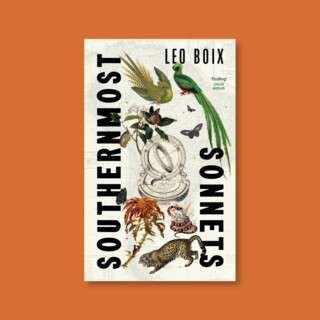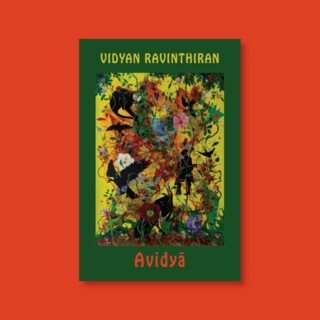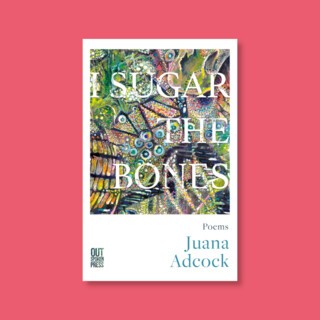A Spirit Hare, Art-Sharks and the Plastic Albatrosses
Posted by Sara Baume

The summer I turned sixteen, I spent a couple of hours every day kneeling on a fluffy mat on my parents’ bathroom tiles, leaning over the tub with an old toothbrush, scrubbing dried mud from animal bones and then laying them out on newsprint to drip-dry. The mud was dark grey and gritty and smelled distinctly of methane. My mother – the archaeologist who was delivering them to the bathroom door in labelled plastic bags – explained that this was because it came from layers undisturbed for hundreds of years, and that the remains were, predominantly, those of animals eaten by citizens of the medieval city of Cork before being cast into domestic cesspits. I soon learned to distinguish a bovine femur from a porcine ulna.
There was a seemingly endless supply of ribs.
I used to single out the jaw bones – I enjoyed the irony of brushing medieval teeth with a pink plastic flexi-handled toothbrush. Even though they were fiddly to clean, I also liked the smaller, scarcer bones of cats and birds, for their daintiness and improbable resilience. I still have a crow skull I pocketed, and then kept hidden for several years in the fear that the osteology experts would somehow notice that it was missing.
They never did. The bones may have been hundreds of years old, but there were also hundreds of them. No individual one was of particular import to anybody but the archivists at the National Museum.
That summer I was trying to decide – with more urgency than any of the summers before – what to do about my future. For my sixteenth birthday, my mother gave me a Thames and Hudson book called Art Since 1960, and then later, after all the bones had been washed and sorted, she brought me on a trip to the newly opened Tate Modern to see Louise Bourgeois’ enormous steel and marble spider, Maman. That was the summer I learned that painting and drawing and sculpture are in fact only different sorts of art, that another sort of art might be a beam of light, or a single word, or an empty pedestal.
The book, the trip, and the revelation that visual art is gloriously unconstrained – shapeless, lawless, restless, limitless – are what I tend to think of as the factors which influenced my decision to apply to art college. I forget that the backdrop to that summer was the bathroom floor, and that the bulk of its days were devoted to the ritual of purifying and preserving the ancient bones of animals.
In September, I looked back and saw how all of my careful effort amounted to nothing more than meaningless procedure.
In Art Since 1960, I was drawn to the photograph of a woman wearing a towering horn on the top of her head, and to another of ten horses tethered by their bridles to hooks in a gallery wall, the tiled floor glimmering with piss, and to another of an upside-down finger-painted eagle. Until the summer that I discovered conceptual art, I had been primarily interested in animals. As a child, I imprisoned a variety of small rodents and papered my bedroom walls with posters of puppies. Later on, after Babe went on general release in the 1990s, I converted to vegetarianism and started joining animal rights groups – the puppy posters replaced by depictions of barbarously slaughtered livestock with slogans like: IF IT’S GOT A FACE I DON’T EAT IT!
The photograph in Art Since 1960 over which I lingered longest was of Joseph Beuys. Sitting with a wall of framed pictures to his right side, an ample window to his left. His face masked by an indistinguishable substance, his conspicuous features smudged-out. And a hare cradled in his lap, paws gathered together, face rested in the crook of the artist’s sleeve.
One day in the winter of 1965, the artist staged a performance in an art gallery in Dresden. Outside, people congregated to peer through the ample window. Inside, there was a scattering of significant objects – a wooden stool, a withered fir tree. The artist wore homemade shoes – one sole of felt and one of iron. His mask was honey and gold leaf; his expression was intensely serious. For three hours, Beuys wandered, whispering indecipherable sentences to the dead hare. Sometimes stopping to hold its head up, or outstretch one of its paws, or waggle its ears about. At one point, he even got down on the floor and pretended to make it hop. When eventually the performance came to an end, the artist was sitting on the stool cradling the corpse against his chest, his back turned on the human crowd.
In a public conversation recorded in 1983, Beuys gently reprimanded his interviewer, Adolf Holl, for attempting to interpret this performance in a straightforward, intellectual way. ‘I think nowadays there’s a deep misunderstanding amongst people that art should be understood through logical sentences which are in this frontal region…’ he said, reiterating his guiding principle that the task of art is not simply to ‘appeal to the sense organs’, but to ‘expand’ them. The only true way to understand an object, according to Beuys, is to take its place – ‘art enters into the person and the person enters into the work of art’. In this case, the object was the dead hare, the topic was the ‘ecological harm’ caused by humans, and the thesis was that by killing creatures and their habitats we are – essentially, circuitously – killing ourselves.
‘In many cultures animals are guardian spirits for shamans, companions on their celestial journeys’, wrote the curator Joan Rothfuss, and ‘Beuys identified personally with several animals, most notably the hare. He always carried a rabbit’s foot or a tuft of rabbit fur as a talisman.’ In the 1983 interview, Holl interjects at one point to observe that Beuys ‘thinks very highly of humans’, and the artist responds by clarifying that he merely trusts them with rather a lot of responsibility. ‘For Beuys, maintaining a close relationship with animals was crucial,’ Rothfuss writes, ‘so that he could learn from what he believed was their superior intelligence.’
Much of his work was an attempt to channel this prodigious intuition, and thereby, to gain contiguity to the natural and spiritual realms.
From Beuys I learned that art might be a force for environmental succour. But by then, most of my membership subscriptions for animal rights organisations had lapsed – I was on a clear course to art college.
In the sculpture department, I discovered Dorothy Cross. It’s fair to say that for most of the years of my early adult life, I wanted to be Dorothy Cross. We had many common interests, which I interpreted as prophetic. Joseph Beuys, for example. ‘I have never been a landscape painter and I never could be,’ Cross said, ‘because I always felt that nature would beat anything that I could try to attempt to paint.’ Her abiding approach to the making of art is ‘to be of it, rather than to be looking at it, to be in it.’ Cross and I also share an infatuation with the sea and all that drifts atop and looms beneath its unrestful surface. In 2009, she found a Cuvier’s beaked whale washed up on a strand in Connemara and convinced a friendly man with a digger to haul it onto her nearby land in order that she might, gradually, take possession of its grandiose skeleton. But if the artist has a spirit animal, it must surely be the shark. Their bodies, skins, even their hearts, have been integrated, repeatedly, into her sculptures.
It was Cross who clawed the poetic credentials of the art-shark back from Damien Hirst.
Hirst’s The Physical Impossibility of Death in the Mind of Someone Living comprised a 13-foot, 23-ton tiger shark submerged in formaldehyde solution and enclosed by an enormous vitrine. The piece was commissioned by Charles Saatchi in 1991, and the shark was caught off the east coast of Australia by a fisherman under the artist’s dispassionate instruction to aim for ‘something big enough to eat you’.
It has since disintegrated.
In the same year as the Cuvier’s beaked whale, Cross managed to obtain a porbeagle shark – a species rare for Irish waters due to the damage done by commercial trawlers – from a local fishmonger. Once it was skinned and desiccated, the artist gilded the underside with pure gold, the objective being to make ‘precious something that’s considered ugly or discardable’. The completed sculpture looks a lot like an archaeological artefact: its surface wizened and tattered, paradoxically dull and dry. Where its eyes once were, there are eerie hollows. Cross doesn’t do vitrines. You can walk all around and under her shark. You can peek through its eye-holes to its glittering soffits. She titled the piece, simply, Relic.
‘I seem to pursue this dialogue,’ Cross said, ‘between the sacred and the profane.’ Each sculpture starts with respect and fascination for the puzzles and patterns of the natural world, then the artist interposes some profanity, twisting the expected into the strange. Her art-sharks are made in homage to a sea-monster who evolved 100 million years ago, as well as a show of solidarity with the tens of millions of living monsters who, every year, are inhumanely slain so that their fins can be turned into a tasteless soup.
From divinity, to defilement, to delicacy.
The first significant sculpture I made in college was displayed at the finish of my first year on an unwieldy trestle table in the middle of a cleared-out classroom. Inside a glass case – fabricated by my father, handsomely, in spite of my faulty specifications – I raised a nebulous cardboard city of black sky-scrapers. Secreted beneath the case, there was a little room furnished with bedding straw, a food bowl, a water-bottle, and a gerbil called ‘Prudence’. The idea was that she would dart about the city like a ghostly Godzilla, nibbling – slowly and emphatically – the cardboard structures down. Because the title was loosely inspired by The Physical Impossibility of Death in the Mind of Someone Living, I cannot exactly recall it. I think it might have included the words ‘urbanisation’ and ‘degeneration’. Possibly even ‘cannibalisation’.
Prudence prudently slept through the entire exhibition, nibbling not one single wall.
How to make a point about ‘ecological harm’ – plainly, yet with poetry – isn’t something I managed to figure out in art college. Instead, I learned that: to imbue an object or action with mystery and beauty and message all at once is practically impossible. Very few brilliant examples exist because, as an artist, one can only really hope to chance upon such a concurrence.
In 2009, an American photographer called Chris Jordan started work on a series called Midway: Message from the Gyre. A friend sent me a link to the pictures, each one depicting a dead bird – which I later learned were baby albatrosses – wasted away to a barely-recognisable clump of bones, feathers, beak, feet and – in a colourful maelstrom where their stomachs should be – every size, shape and shade of plastic scrap.
Bottlecaps, lighters, bits of broken buoy. Even the tiny toys which come out of Christmas crackers and Kinder eggs.
The photographs were taken on a collective of three small islands which lie roughly half way between Asia and North America, one of the most remote locations on earth. Midway Atoll remained uninhabited by humans until being claimed as US territory in 1867 to be tapped as a source of guano, which, back then, was used in the manufacture of gunpowder and agricultural fertiliser. Later on, it became the site of a significant battle during the Second World War, and in 1988, a National Wildlife Refuge. Nowadays, it finds itself ‘located near the apex of what is being called the Pacific Garbage Patch’ and the baby albatrosses in Jordan’s photographs are just a sample of the thousands who die in the aftermath of being ‘fed lethal quantities of plastic by their parents, who mistake the floating trash for food as they forage over the vast polluted Pacific Ocean’.
As visually arresting as these photos are, it is in fact the invisible, uncontainable microplastics which now pose the most significant threat to marine species. ‘A comparison I like to use’, Carey Morishige of the National Oceanic and Atmospheric Administration wrote on a blog in 2012, ‘is that the debris is more like flecks of pepper floating throughout a bowl of soup.’ When Jordan chanced upon the albatrosses, he’d found a Rime of the Ancient Mariner for the twenty-first century. The ‘painted ocean’ becomes a plastic ocean, ‘the bird that made the breeze to blow’ never even fledges, but then, in the end, it’s the sailors who die.
By killing creatures and their habitats we are – essentially, circuitously – killing ourselves.
My friend sent me the link in the first place because the dead birds had made her remember an installation I’d put together the previous summer as part of a group exhibition in a disused orphanage in western Poland. I had a little green bedroom in the roof all to myself. I erected tiny shelves and arranged animal figurines which I’d whittled from balsa wood on top. Then I covered the walls with photos of dead creatures which had been taken, haphazardly, in and around the countryside where I grew up. It was not a series that had come about as an exercise in the making of art. It was morbid curiosity, at first, then it was collecting. With a crummy old camera, over the course of a couple of years, I had managed to capture a dozen different native species on film. I can’t remember what the installation was called, or what my point was supposed to be, or how people responded – except that somebody pocketed a hedgehog made out of toothpicks, and I was upset about this, initially, and then later, philosophical.
Somebody must have liked it, I thought, if they wanted to own it. It was the last exhibition I took part in.
By twenty-six, I had almost entirely given up trying to be an artist – flummoxed into submission by the very same thing which had so excited – and incited – me at sixteen: the illimitable possibility of the form.
But the albatross bones reminded me to ask my mother for an update on medieval Cork. What did the osteology experts find – after the dig was dug, the bones washed, and I’d gone off back to school, and then finally on to art college, and forgotten all about them? They found the bone of white-tailed eagle, she said, a species which had been wiped out by the modernisation of farming practices during the last century. And they found the scale of a sturgeon, she said, an endangered species of gigantic shark-like fish which evolved over 200 million years ago.
So the procedure of bone washing hadn’t been so meaningless after all. Or at least, ‘meaning is discovered in what connects,’ as Berger had it. ‘Meaning and mystery are inseparable, and neither can exist without the passing of time.’
Sara Baume’s new novel A Line Made By Walking is out now from Heinemann.




